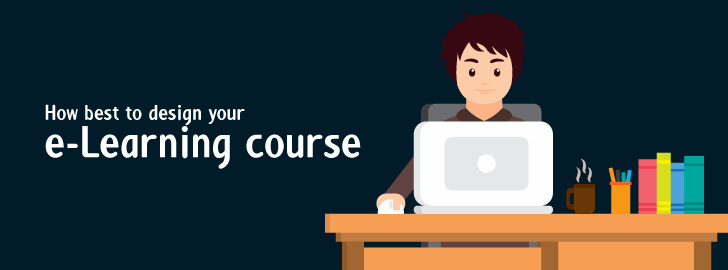eLearning Best Practices
eLearning is revolutionizing education like never before. The advent of eLearning has bridged the gap between distance and education and has thus helped in the emancipation of millions of education seekers across the globe who live in remote villages and towns. Students, most of them young children living in far flung places in India or Africa, have to walk miles to get to schools. But the advent of technology has helped educators create eLearning content that can be accessed from any place and any time.
Not just this, but educators can now bridge the gap in student learning and student performance by bringing more personalized coaching in the form of eLearning. To understand this fact more clearly, consider the example of a typical 3rd grade class. A teacher would have to teach children with varied mental capacities. There are some who may pick up concepts immediately while for others even the simplest math problem may be a gargantuan task. An educator’s ultimate aim is to ensure that all students perform well. But it’s manually impossible to personalize teaching for every student. This is where eLearning has helped. By personalizing education content to suit every child, educators can fulfill their aim of enhancing student performance.
And not just schools but corporates and production companies are increasingly turning towards eLearning to better educate their employees and keeping them up-to-date. Those adopting eLearning, have the opportunity to keep information exchange alive and introduce their employees to new products, processes, and innovations. Also, encouraging employees to take up new certifications and exams will only motivate and make the workforce more productive.
But eLearning is not a magic formula that automatically raises someone’s IQ. Behind any successful eLearning program is careful design and engaging content that can keep the audience hooked and interested. The navigation, the graphics, the content in relation to the graphics, the learning level, and application of a learning theory, all need to cohesively come together to create great eLearning material. Like in all industries, eLearning and Instructional Design also have a set of best practices, which when followed ensure good results. Let’s have a look at some of the universally adopted eLearning best practices:
- What does your learner want? What do you want to teach?
Analyzing your audience and understanding their need is probably the most important part of instructional design. Once you know who your audience is and its expectations, you can design the course in a way that hits the nail on its head and cater to the educational background, technical expertise or job roles of the audience and help enhance them. You should know what skills the learner needs to develop, in other words the objective of your course. There are different types of eLearning courses and it is important to understand which one suits your target group. - Great content = Great eLearning course.
The ultimate aim of any eLearning program is to help make learners more proficient in their subject. Good content can help engage a learner and develop further interest in the subject. An Instructional Designer should have careful understanding of the subject to be written on, should liaise with Subject Matter Experts to verify content, and decide the medium of instruction. Moreover the content should have the capacity to connect with the user on an emotional level and deliver the right amount of complexity. - Interaction is action.
Any eLearning content is effective only when it gives the learner an opportunity to explore and understand content and reassess their knowledge. This can be provided by introducing interactivity in questions, simulations, and screen graphics. Interactivity is what makes an Instructional Design page different from an ordinary internet page. But the interactivity needs to be inserted at suitable, well thought of locations. Designers must consider what interactions would engage the learner and how many interactions should go into a course to ensure full comprehension by the learner. Good interactivity is like a dialogue session between the learner and the content, wherein the learner receives a response based on the choices made. This makes the learner an active participant in the course. There are passive modes of interaction too, which are used to introduce concepts while active interactivity is used for reinforcement. The designer should choose the type of interactivity based on the subject and audience type. - User interface and user experience.
The user interface is among the most important aspects of an eLearning course. This is the part of the course that the learner interacts with. So, it includes the menus, buttons, images, color scheme, and the overall look and feel of the page. The basic considerations while designing the user interface are to ensure smooth flow from one step to the next, applying universal standards, and being consistent across the course. - Learning assessment.
Assessing the learner on the subject is essential to also test the effectiveness of the program and measure the comprehension of the learner. Learning assessment can be done before or after the course and depends on the type of audience. The assessment also needs to map accurately with the objective of the course and should offer variety to the learner such as multiple choice, true/false, match the columns, or pick the right option. Performance assessments which are conducted before and after the course are an important way to gauge the learner’s comprehension. - Product evaluation.
Any product needs to be evaluated so that steps can be taken to improve and enhance it. The same goes even for an eLearning course. Performing quality checks before the product is released helps remove and rectify problems which might otherwise hinder a course. These might include peer reviews, pilot tests and usability tests; simple but extremely effective in enhancing the quality of the product. The other type of quality check is performed after the product is released. This helps when it comes to developing future courses as one gets ideas from the learner’s perspective.









